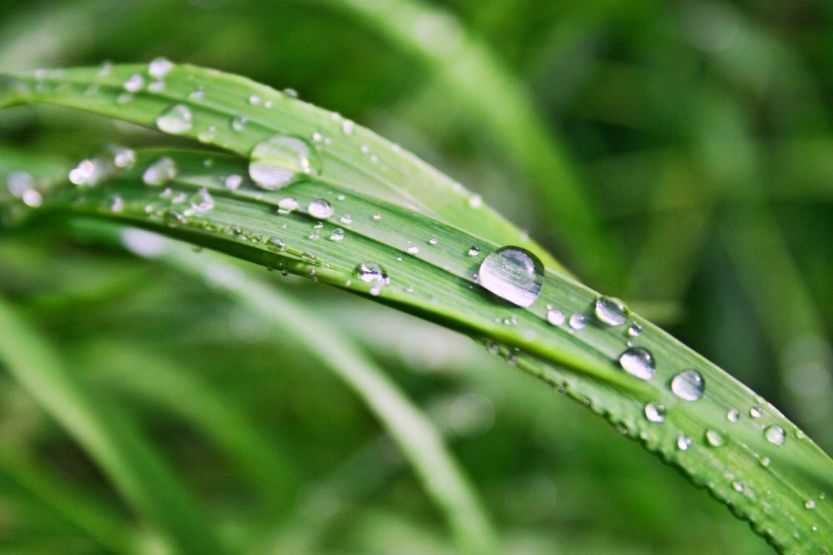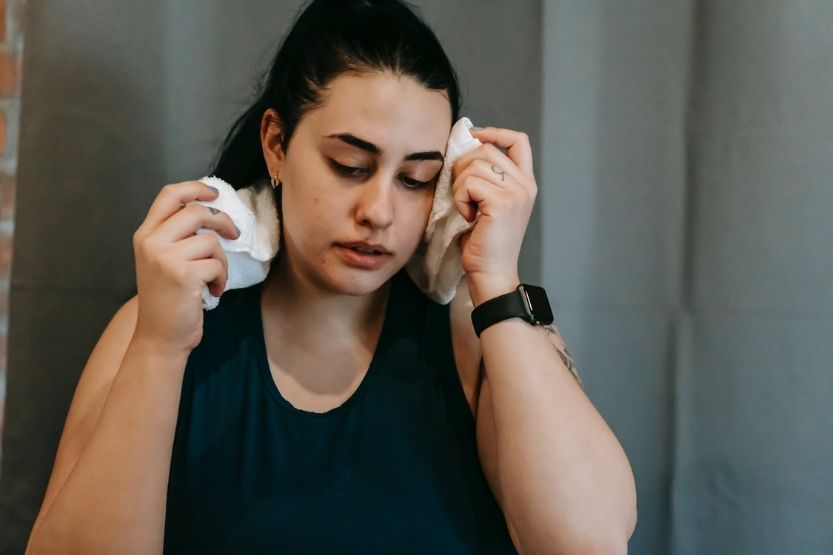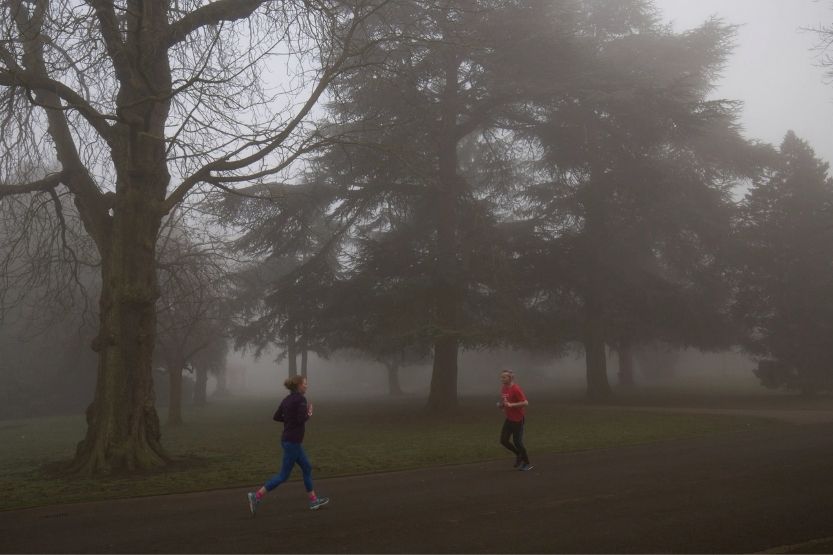It’s not humidity, but it’s the dew point that determines how comfortable you are. If you want to be comfortable, you need to know the best dew point. What is a comfortable dew point?
The dew point that will make you comfortable at any time should not be more than 55. It could be slightly less, but it should not exceed that amount. If the dew point is higher, your surroundings will feel sticky or muggy. A dew point of 55 will allow you to feel dry and comfortable.
If the dew point is higher than 60, you will start to feel muggy. You will feel hot and sticky because there is so much water vapor in the air that slows the evaporation of your sweat. It prevents your body from cooling.
Read on to learn more about dew point, what it is, how it affects your comfort and how you can control it.
Comfortable Dew Point

What is a comfortable dew point? To obtain general comfort levels, the dew point in your area should be no more than 55. It could be slightly less if it goes higher than that, you will begin to feel sticky or muggy. Many people are still comfortable at 60.
But higher than 60 will definitely make most people feel muggier. The reason is that, at this level, there is so much water vapor in the air. It will slow down the evaporation of your sweat and will prevent your body from cooling.
The dew point is an important comfort factor because it indicates moisture in the air during the summer months. We all know that the temperature is warmer during these months.
When you are perspiring in normal conditions, the moisture on your skin evaporates. This cools your body. But when the dew point is high, the evaporation of the moisture on your skin will be very slow.
The reason is that there is so much water vapor in the air. You have a ‘wet in wet’ situation where your skin is wet, and the surrounding air is also wet. It gets difficult for the moisture on your skin to evaporate because there is so much water vapor in the air. So, you feel sticky and muggy. As the dew point climbs to 70, the air becomes oppressive.
Dew point also has some effect on humidity. You already know that the greater amount of moisture in the air, the higher is the dew point. If the dew point in your place is 30°F and the temperature is also 30°F, you will have a relative humidity of 100%. However, if the dew point is 60°F and the temperature is 80°F, the relative humidity will be 50%.
Dew Point Described
The temperature required to cool the air to condense and change into water (in liquid form) is called the dew point. You can see this process in action in the dew that collects on the grass in the early morning. Once the temperature of the air equals the dew point, the humidity is 100%.
You will know that it is humid if you feel slightly uncomfortable. This will happen at around 65 degrees dew point, no matter what temperature the air is. As soon as the comfortable dew point range approaches 70, you will become very uncomfortable.
Even in cooler mornings with 75°F temperature, you will notice this uncomfortable condition. If the air temperature is 75°F and the dew point is 74, you will feel humid. If you are doing brisk walking, your sweat will cling to your skin.
As the air gets hotter, the more uncomfortable you will be. The 74 dew point combined with a hotter 90°F air temperature will make the sticky feeling even worse. So, you can see why a higher dew point is equal to a lower degree of comfort.
Heat Index
That is the other meaning of the term ‘heat index.’ It is a computed temperature that indicates what the body will feel for a certain combination of humidity and temperature. It simply means the amount of water vapor or humidity in the air.
The more humidity, the wetter you will feel. The heat index manifests its greatest effect on the humidity in the mid-afternoon since it is the hottest part of the day.
In the relation between temperature and dew point, the temperature is always higher than the dew point. The dew point can be equal to but will not exceed the temperature. If the dew point rises to the air temperature level or the air temperature cools down to the dew point, dew or fog will form.
Trivia
The highest dew point ever recorded on earth occurred on July 8, 2003, in Dhahran, Saudi Arabia. It reached 95°F. In the world, the warmest water temperature is found in the Persian Gulf. The water temperature usually peaks up to 90°F during summer in the area. So, the dew point in this geographical area is also considerably high.
How Dew Point Affects Comfort

It’s worthy of considering the dew point in your area because it really affects your degree of comfort. If the dew point is high in your place, the moisture in the air will slow down the rate by which your sweat evaporates. Your body’s ability to cool down itself is hampered. That is what makes you feel uncomfortable.
The following table will show you how you will feel at different dew points:
| Dew Point Temperature, °F | What You Will Feel |
| 70 to 74 | Very humid, very uncomfortable |
| 65 to 69 | Uncomfortable for most people at a higher limit |
| 60 to 64 | Alright for most people, all will perceive the humidity at a higher limit |
| 55 to 59 | Comfortable |
The dew point is the measure of the water vapor in the air. So, if you know the dew point in your area, you will have an idea of how moist or how wet the air will be.
Dew Point Is Not the Same as Humidity
The dew point indicates the moisture level in the air. If the dew point is high, the moisture content is also high at certain temperatures. On the other hand, humidity is the measure of the concentration of water vapor in the air. Water vapors are in a gaseous state. You can’t see them with your naked eye.
Meteorologists Use Dew Points
Meteorologists, the people who predict the weather, talk about dew points and not humidity when referring to the mugginess or stickiness of the air. The reason is that humidity, or more precisely, relative humidity, measures the amount of moisture in the air relative to the existing temperature.
What makes this phenomenon a bit confusing is that if you have 100% relative humidity with an air temperature of 50°F, the condition is not humid, and you will still feel cool. However, 100% relative humidity combined with 75°F will make you feel sticky and muggy because the temperature is warmer.
So, you can see 100% humidity may or may not feel comfortable. That is why it is better to consider the dew point instead of the humidity to gauge the comfort level of a certain place at certain times of the year.
Another Definition of Dew Point
Another way of defining the dew point is that it is the temperature at which the air needs to cool (at constant water vapor content and constant pressure) to reach saturation. The condition is already saturated when the air contains the maximum amount of water possible at the existing pressure and temperature.
Air Saturation
The state of air saturation exists when the air temperature and the dew point temperature are the same. That is why the dew point will never be greater than the temperature of the air. So, once the air cools down, moisture is no longer present in the air.
This is done through the process called condensation. Once condensation takes place, you will see the development of small water droplets. This can lead to the formation of fog, frost, clouds, and even rain.
Dew Point and Relative Humidity
You can also use dew point to infer relative humidity. When the dew point and the air temperature are nearly the same, the air will have high relative humidity. It will be the opposite if there is a big gap between the dew point and the air temperature. Air with lower humidity is the most likely consequence.
Areas with high dew point temperatures ranging from 65 to 70+ will have uncomfortable humid conditions. Most likely, these areas will experience clouds and precipitations (rains) if the humid condition persists.
So again, what is a comfortable dew point? A comfortable dew point is 55 or less. A dew point of around 35 to 55 will be dry and comfortable. A dew point of 55 to 65 will feel sticky or muggy.
Difference Between Dew Point and Humidity

When people talk about comfort levels, you will sometimes hear them say, “It’s the humidity, not the heat.” That is true because although heat plays a major role in causing hot conditions, dew point and relative humidity are the elements that actually determine your comfort levels.
Dew point and relative humidity are two different things. You can’t interchange the two terms since they refer to different parameters.
Basically, the dew point is the temperature level at which the moisture in the air changes or transforms into condensates in fog, frost, and clouds. Relative humidity or simply humidity is the measure of the percentage of water vapor in the air.
To illustrate, if the conditions in the area are said to have 97% relative humidity, the outside air needs only 3% additional water vapor to achieve complete saturation. Meanwhile, a 100% saturation means the place will have fogs. It is not rain that will develop completely, regardless of what some believe, but fog.
However, relative humidity will not give you the whole picture, especially during the summer months. The better indicator of the forthcoming conditions is dew point, as to how comfortable or how sticky it will be.
Meteorologists commonly use the dew point as the indicator of future conditions because it gives a clearer picture of the relationship between air temperature and relative humidity. Again, the dew point is the temperature when dew forms. It is also the temperature needed for the air to cool at constant pressure to achieve total saturation or produce fogs.
Dew Point Comfort Scale
As the warm season approaches, it is better to be armed with the information on the dew point forecasts in your area. Here is a table that you can use when the summer season arrives. Use it to prepare things that will make you comfortable when the dew point temperature forecast is high:
| Dew Point | Comfort Level |
| 52 and lower | Pleasant |
| 53 to 56 | Comfortable |
| 57 to 59 | Still comfortable |
| 60 to 63 | Getting sticky |
| 64 to 69 | Uncomfortable |
| 70 + | Intolerable |
Control Dew Point – Use Air Conditioner
When the relative humidity in your place is less than 40%, you will feel dry. But when it rises to 80%, you will feel moist. Combined with a high dew point, the more uncomfortable you will be. When the humidity is more than 80%, and the dew point is more than 65°F, you will be uncomfortable.
If you want to be more comfortable, the ideal combination is a dew point lower than 65°F and relative humidity of about 50% to 70%. You can maintain these parameters in your home if you use an air conditioner during the summer months. An A/C will remove moisture and heat from the air in your home.
When choosing an A/C for your home, bigger is not necessarily better. Choose a machine that is just right for the area that needs to be cooled with some allowance. A bigger machine will waste expensive energy.
If you have the right-sized A/C, the compressor wouldn’t have to run often. So, you save on electric bills. But if you use a bigger A/C, you will certainly cool your home, but there would be a lot of excess capacity that the unit will release. That is wasted energy which amounts to a waste of money. Ask the help of the A/C tech in the store so that you can get the right size A/C.
Conclusion: What Is a Comfortable Dew Point Range?
A dew point of no more than 55 will give you the best comfort. It could be slightly less, but it could not be more than that. Once the dew point gets higher than 55, your surrounding will feel muggy or sticky.
There are ways you can keep the dew point in your home not more than 55. Turning on your air conditioner will allow you to control moisture in the air in your home and make the conditions drier and more comfortable.
For your quick reference, here are the ranges of dew point and what you might expect to feel:
| Dew Point Temperature, °F | What You Will Feel |
| 70 to 74 | Very humid, very uncomfortable |
| 65 to 69 | Uncomfortable for most people at a higher limit |
| 60 to 64 | Alright for most people, all will perceive the humidity at a higher limit |
| 55 to 59 | Comfortable |



![Read more about the article How to Get Coconut Oil Out of Clothes [8 Ways]](https://howchimp.com/wp-content/uploads/2022/06/how-to-get-coconut-oil-out-of-clothes-300x200.jpg)